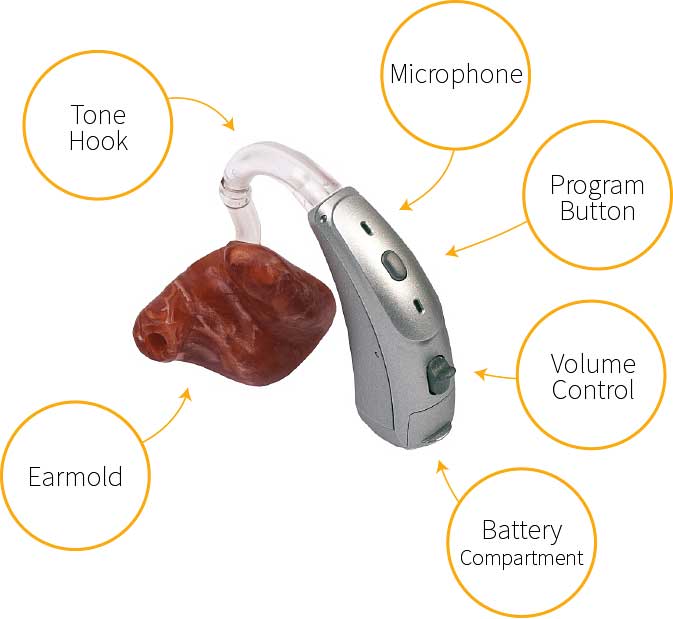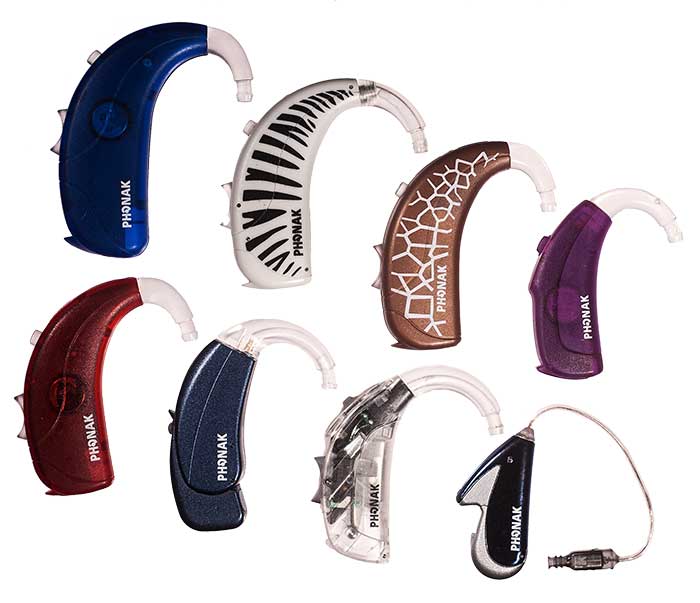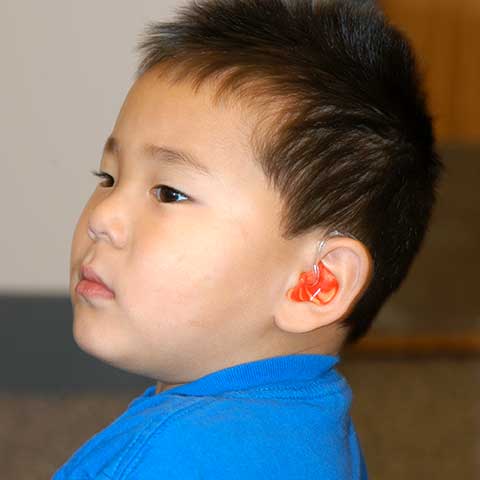How Do Hearing Aids Work?
The microphone picks up sounds and sends them to a small computer with an amplifier that makes the sound louder. The hearing aid will make some pitches of sound louder than others, depending on the shape and severity of the hearing loss. Your audiologist will connect the hearing aid to a computer program in order to adjust the sound for your child's needs.
After sounds are made louder, they go through the
earhook – a small plastic piece that holds the hearing aid on over the top of the ear – to an earmold that is custom made for your child.
All hearing aids have the same basic parts: a microphone, digital amplifier and speaker.
Hearing Aid Parts
All hearing aids have the same basic parts: a microphone, digital amplifier and speaker. Behind-the-ear (BTE) hearing aids (shown below) are the preferred style for babies and children.
These hearing aids are recommended for babies for a number of reasons:
- Longer lasting batteries
- Safety and comfort: the flexible earmolds are more comfortable for children and less likely to hurt the ear if damaged during play
- More options for connections to FM systems in the classroom
- Assistive technology capabilities including Bluetooth compatibility
- Fun color options for children to personalize their hearing aids

Earmolds for Hearing Aids
Earmolds are made from a mold or impression of your child's ear. They are made from soft materials and fit in the outer ear and ear canal.
- It is important for earmolds to fit snugly in the ear. They need to be replaced as your baby's ear grows. When children are small, earmolds may need to be replaced every 2-6 months.
- Earmolds are available in a variety of colors, including skin tones, bright colors, glitter and clear.
More about
hearing aid fitting and evaluation for infants and young children.

Hearing Aid Gain
Hearing aid gain is the amount of volume or loudness increase at each frequency that is provided through the hearing aid.
- For milder hearing losses, a small amount of gain is needed.
- A severe hearing loss needs more gain.
When the amount of hearing loss is different across frequencies, the audiologist must adjust the gain of the hearing aid differently for each frequency.

Popular Questions about Hearing Aids
Language learning begins within the first months of a baby's life. It is important for babies with hearing loss to start using hearing aids as soon as possible. Hearing aids may be small, but there are many important things to learn about them. It is important to learn about hearing aids and devices so you can help your child.